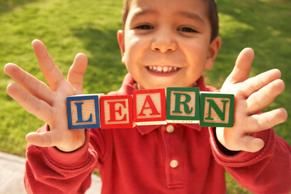 In the forward of William Parrett and Kathleen Budge’s recent book, Turning High-Poverty Schools Into High-Performing Schools, Michael Copland describes standing in front of the faculty in an after-school meeting to discuss data regarding student achievement.
In the forward of William Parrett and Kathleen Budge’s recent book, Turning High-Poverty Schools Into High-Performing Schools, Michael Copland describes standing in front of the faculty in an after-school meeting to discuss data regarding student achievement.
Copland recalls presenting the information on an overhead projector and stoking his colleagues to produce a dialogue that would help him better understand the unsettling gaps in student achievement. To him, the problem seemed blatantly obvious: The needs of the students—who, by the way, came from one of the poorest areas in the district—were not being met.
At this point, the hands of several teachers went up. Although they were bothered by the fact that their students were struggling, Copland noticed a pattern in the faculty’s rhetoric: “How can you expect us to teach our students at the same level as students who come from a middle-class, two-parent household?” Does this sound familiar?
Copland recalls working hard to push the conversation into critical and self-reflective direction, but ultimately, it regressed into scapegoating and blaming students and their socio-economic “maladies” instead of taking ownership for the lag in student achievement.
The general consensus in the room seemed to be that what the school and the teachers needed to “ensure adequate learning growth” was not a more effective approach to teaching, but better students.
The purpose of this “blog” (which is quickly turning into an article) is not to rehash Copland’s or Parrett and Budge’s 220 page argument in its entirety—there’s not enough time or room for that. We would, however, like to emphasize a few of Parrett and Budge’s simple action steps that the authors argue are intimately connected to increased student achievement:
- Learn Their Names
We’ll keep this one short and sweet: High-performing, high-poverty schools, regardless of how large the student body is, know every student by name. No excuses. No exceptions. - Start Student Advisories
Schools should strive for positive and caring relationships not only between adults and children, but also between peers; this won’t happen on its own. Parrett and Budge refer to a rural school in the West: Despite the fact that the school was relatively small (400 students), many of the students reported feeling disconnected from teachers and their peers. The principal’s commitment to providing his students with a nurturing environment led him to reorganize the school day to include an advisory program. As a result, all faculty, including the principal, became mentors to a group of 18-20 students and stayed with this same group until their graduation, meeting briefly four days a week. - Create Smaller Learning Environments
In large or moderately large high schools, those committed to student achievement often provide incoming freshman with a protective, smaller learning community—or “academy.” While still a part of the high school proper, the academy allows new students to gradually transition into the larger school while working with a smaller group of students and a core group of teachers. - Engage Parents, Families and the Community
If administration wants to see increased student achievement, they also need to know when it is time to close the books and move beyond the classroom. Often, the only experience parents have with teachers and administration is punitive, which undermines the school’s attempts to nurture relationships with students and their families. If you want to gain your students’ trust, you must also earn the trust of the parents.
- Conduct Home Visits
In his article, “Involvement or Engagement?” Larry Ferlazzo describes the parent community education program used by his Sacremento, California high school. Luther Burbank is an urban school of 2,000 students. In spite of the large student body, every summer its staff makes hundreds of visits to the homes of incoming freshman as well as the older students who have not successfully passed the High School Exit Exam. The goal for Ferlazzo and his staff is “not just to tell students and their parents what to expect when they enter high school or to harangue them about the need to work harder to graduate.” The staff at Luther Burbank knows that parents know something about the child they have spent more than 14 years raising, so instead of talking, they’ve decided to start listening.
This blog post has been written by Karen Cameron on behalf of Marygrove College’s Master of Arts in Educational Leadership program. If you found this to be helpful, feel free to peruse our other blogs here.
Comment
© 2025 Created by Steve Hargadon.
Powered by
![]()
You need to be a member of Classroom 2.0 to add comments!
Join Classroom 2.0